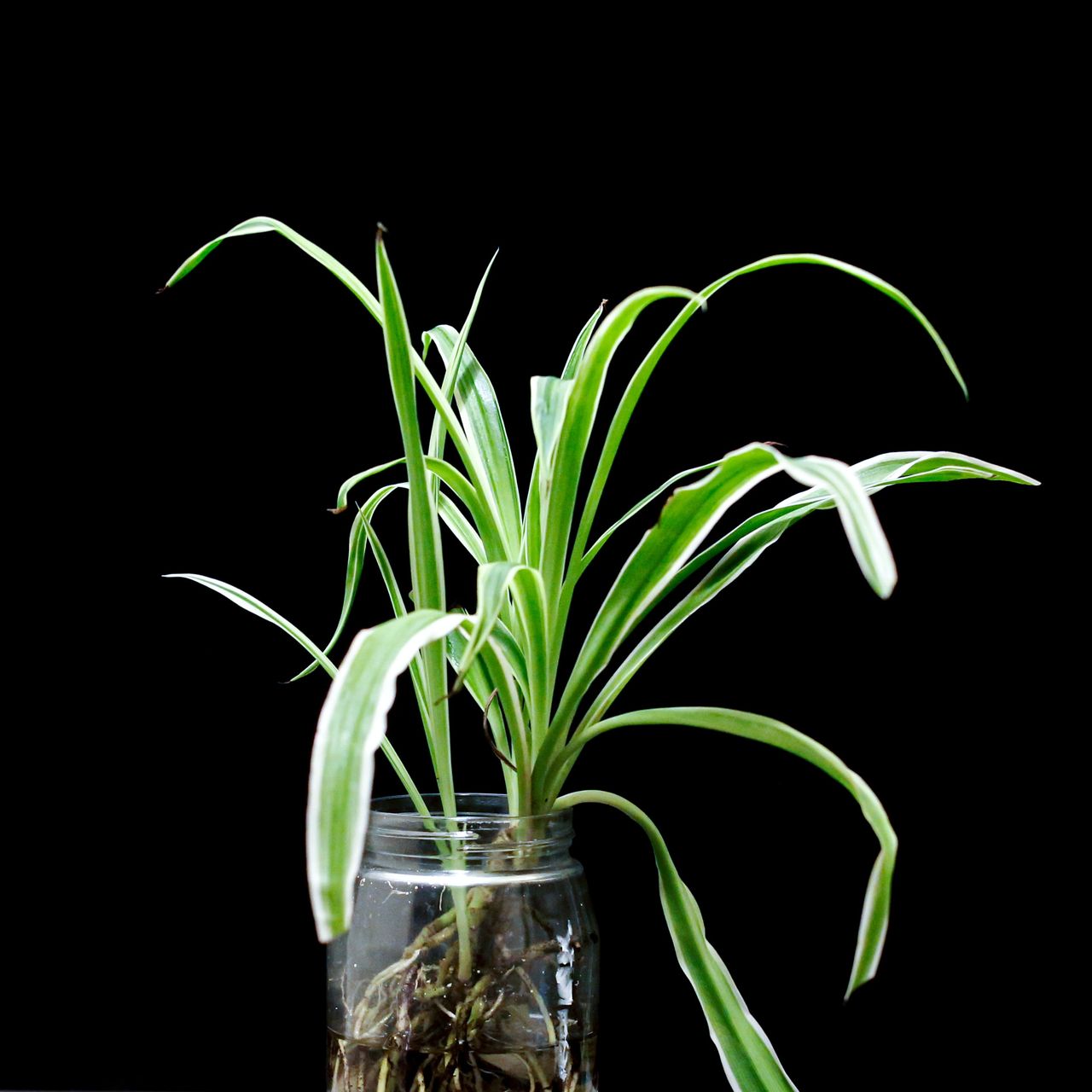

Knowing how to propagate plants is not only very satisfying but it's also one of the most useful budget-friendly ideas going if you plan on creating your own indoor jungle. You are essentially multiplying your favorite house plants, for free.
When you care for house plants properly, you usually are rewarded with the opportunity to make more plants. Aloe vera will pop up pups all around the soil, Spider Plants will offshoot small plantlets, and healthy plants can often be propagated using their leaves or by division. It might seem like a complicated task but there are a few different techniques to choose from, depending on the plant at hand, and then it's pretty straightforward. Some plants basically do it for you. Whether you have a Monstera to propagate or want to bring ten ZZ plants to life, we can help.
- Find all the best house plants.
Plant propagation essentials:
- A sharp and clean pair of scissors/a small knife
- Rooting hormone powder
- Succulent soil potting mix
- Clean pots
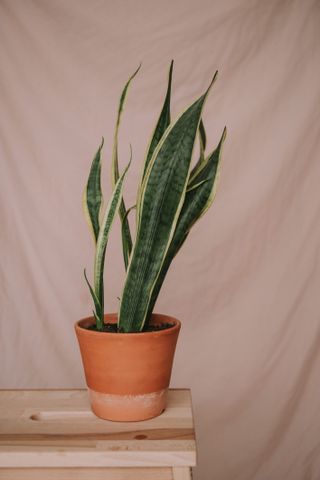
Propagating plants by leaf cuttings
This is a good method for snake plants and succulents too (though you will not need to divide the succulent leaves). Simply divide a healthy leaf into sections, of about 2-4 inches wide, taking note of the bottom end.
Next, lightly dip the bottom ends in a little rooting hormone powder, then press these in moist potting compost. Keep your pots in a sunny, warm spot, and roots should start to establish in a few weeks.
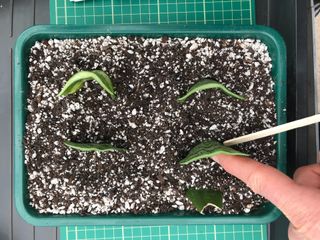
Propagating plants by division
This is an ideal method for indoor varieties like like ZZ plants, Calathea and Peace Lily. You'll need to water your plant the day before. Prepare separate planting pots ahead of time, then gently remove the parent plant from its pot to reveal the rootball/rhizomes. Look for natural divisions and gently tease the roots free as you divide the plant. Note for ZZ and other Rhizome plants you may need more of a tug. Take it slow as you should try not to tear or break any roots here. Remove any dead or unhealthy growth.
Some put the individual plants in plastic bags to stop them losing moisture and going into shock, or you can pot them up carefully as you go. Replace the soil of the mother plant and consider adding some of this to the offspring too to soften the change in environment.
Water them, letting any excess drain off and try to keep them together in a warm and well lit spot, caring for them as you would usually, until they start to grow.
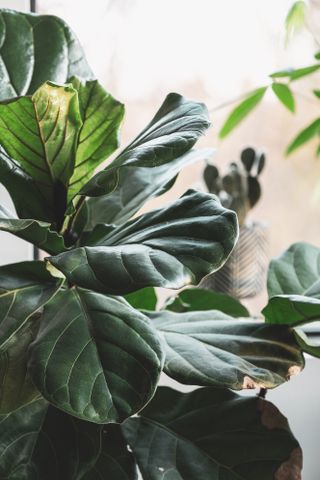
Propagating plants by stem cuttings
You'll want to select a healthy and mature vine, preferably one with visible root nodes that look like small bumps (this is where new roots comes from). Cut just before a node, a few inches from the top of a branch. Then carefully pull off any leaves from the bottom 1-2 inches. Next you want to dip the end in rooting hormone and pop it into some potting soil, in the corner of a pot, using a pencil to carve out a hole so that you don't rub off the rooting powder. Fill the hole up to secure your cutting, water and keep it in a warm bright spot until established enough to move into a bigger pot.
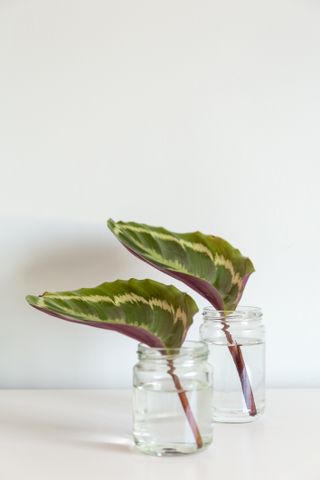
How to propagate plants in water
Most Aroid/Araceae family plants and pothos plants such as Monstera, Philodendrons and ZZ plants can be successfully propagated in water too. This also works well for mint. Simply remove the stem cutting as before and plant it in a water-filled cup at room temperature. When it starts rooting in a couple of weeks, move it into potting compost and grow as usual.
Note, you don't want any leaves to be in the water or they will rot so if this is an issue, try and hoist up your cutting as it were using cocktail sticks or another creative way.
What is the best method of plant propagation?
There's no best method, but it's whatever suits the houseplant you're working with.
We spoke with Kate Turner, houseplant guru at Miracle Gro about the best ways to propagate indoor plants successfully.
'There’s nothing better than being able to extend your houseplant collections by propagating your favourite ones. There are different propagation techniques for different plants, but below are three easy ways to propagate and increase your plant collection for free!'
- Find more indoor gardening ideas.
How to propagate succulents
Succulents are particularly easy to plants to propagate – whether a house or garden plant – as clump-forming varieties produce offsets. You can take leaf cuttings from fleshy leaved species, and stem cuttings from branching types.
Turner adds, 'Most succulents are super easy to propagate. Take off a healthy leaf and leave it somewhere dry to develop a callus for a few days. Then simply place the leaves on top of a pot or tray of compost and it will produce babies called chicks and then roots.'
- Some succulents are pet-friendly house plants.

How to propagate Aloe vera
'Carefully pull up the visible Aloe pups from the surrounding soil of the parent plant, taking as much of the root as you can. Brush off any excess soil then, as with succulents, leave them somewhere dry to develop a callus for a few days. Then you can pop them into potting soil to root properly. Keep them in a sunny spot and water as you would the parent Aloe.' Recommends Turner.
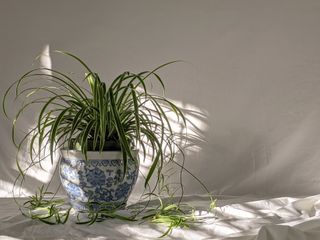
How to propagate Spider plants
'This plant is also very easy to propagate, and perfect for beginners. Simply wait until you have a new growth - the baby - and remove it from the mother plant. You can either directly plant it in its own pot, or to speed up the process, leave it in water until roots have grown, then repot it.'
- See the endless benefits of house plants on health and well-being.
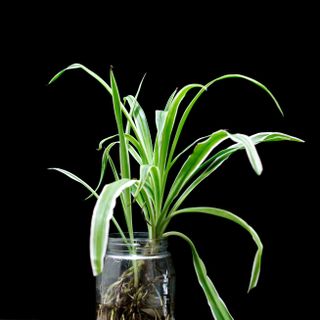
How to propagate Devil’s Ivy
'This plant is not only one of the most popular houseplants in the world, but also a very undemanding one too. To propagate this plant, simply take a healthy stem with at least four to five leaves on it and snip it right below the leaf node. Once cut, place it in a jar of water and leave it for around three to four weeks until it develops roots of its own. Once you have roots, simply pot it in a new pot with compost, or add it to the mother plant to make it appear fuller.'
- Find more easy house plants that are borderline indestructible.
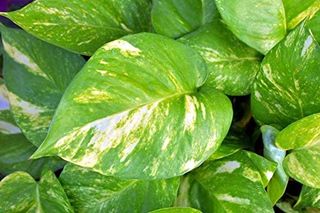
How long will propagated plants take to grow?
You should start to see movement of roots and establishment in a couple of weeks time but, it all depends on the plant, the technique you used and its growing environment! For best success, try propagating a few at a time.
Hey plant pups 🌿
Join our newsletter
Get small space home decor ideas, celeb inspiration, DIY tips and more, straight to your inbox!

I'm Cam, the former deputy editor of Real Homes who worked on the site from 2020 to 2023. As a renter myself, sharing a home with two friends (and my cat) in London, I know all too well the challenges that this can pose when it comes to creating your perfect setup. As someone who has always loved everything interior design-related, I cannot rest until a home feels right and I am really passionate about helping others get there too, no matter what their living situation, style, or budget may be. It’s not always the easiest to figure out, but the journey is fun and the results are so worth it.
After interior design, travel, art, and photography are my next big passions. When I’m not writing or editing homes content, I’m usually tapping into other creative outlets, exploring galleries in London or further afield, taking photos, scribbling, or drawing!
-
 The 7 flowers to plant in August, according to gardening gurus
The 7 flowers to plant in August, according to gardening gurusKnowing what flowers to plant in August isn't always so clear-cut. But that's why we called in help from pro planters — here's what they said to pot.
By Becks Shepherd Published
-
 The 7 plants to prune in August — and the 2 pieces of greenery you shouldn't touch
The 7 plants to prune in August — and the 2 pieces of greenery you shouldn't touchWondering what plants to prune in August? We asked a gardening expert for their top tips plus info on what pieces of greenery to avoid pruning this month
By Becks Shepherd Published
-
 Do you need to deadhead azaleas? Top tips for pruning these flowering shrubs
Do you need to deadhead azaleas? Top tips for pruning these flowering shrubsWondering whether you need to deadhead azaleas? We asked a gardening expert for their top tips for looking after these blooms
By Becks Shepherd Published
-
 14 lawn edging ideas that will add definition and style to your backyard
14 lawn edging ideas that will add definition and style to your backyardWant to neaten up your lawn with lawn edging ideas? From fresh flowers to laidback bricks, we've scouted out materials and styles that look brilliant
By Eve Smallman Published
-
 Which houseplants are toxic to dogs? Vet experts pinpoint problem plants and solutions
Which houseplants are toxic to dogs? Vet experts pinpoint problem plants and solutionsWondering Which houseplants are toxic to dogs? We spoke to vets about the problematic leafy greens, what they trigger in dogs, and how to find a solution
By Danielle Valente Published
-
 How to attract hummingbirds to your backyard, according to ornithologists
How to attract hummingbirds to your backyard, according to ornithologistsTrying to figure out How to attract hummingbirds to your backyard? These ornithologist-backed tips will guarantee you visitors in no time
By Danielle Valente Published
-
 Does hydrangea bloom every year? Pros spill the dirt on the "garden favorite" and when to expect it
Does hydrangea bloom every year? Pros spill the dirt on the "garden favorite" and when to expect itWondering, "Does hydrangea bloom every year"? We asked the pros all about the garden favorite and how often to expect them — here's the dirt.
By Danielle Valente Published
-
 What to prune in spring — experts reveal how to get a lush, full garden
What to prune in spring — experts reveal how to get a lush, full gardenCurious what to prune in spring? We asked gardening experts for their top tips for a luscious, thriving garden
By Danielle Valente Published

